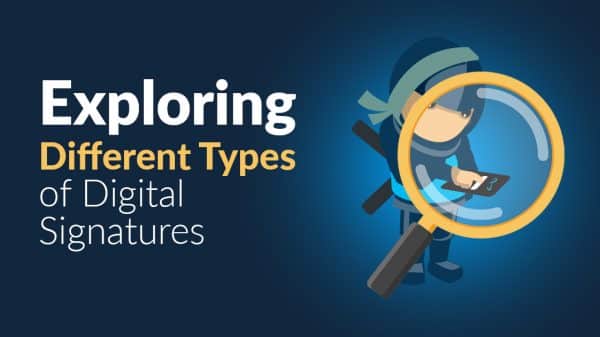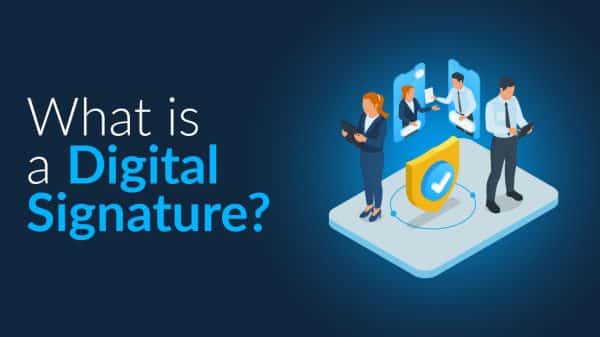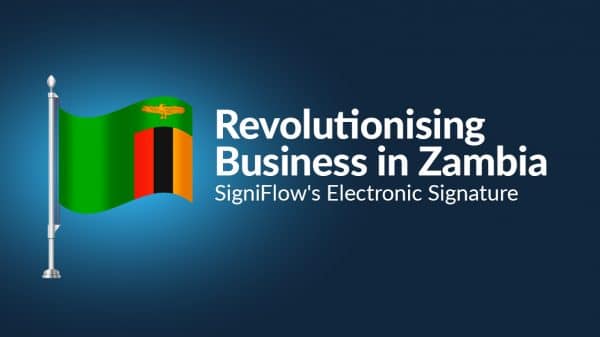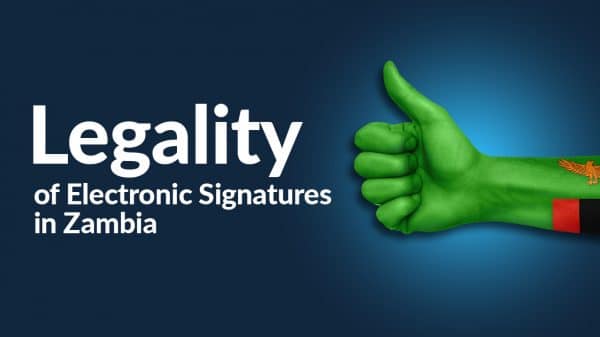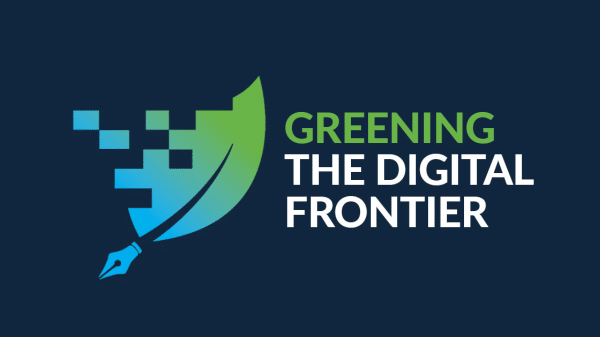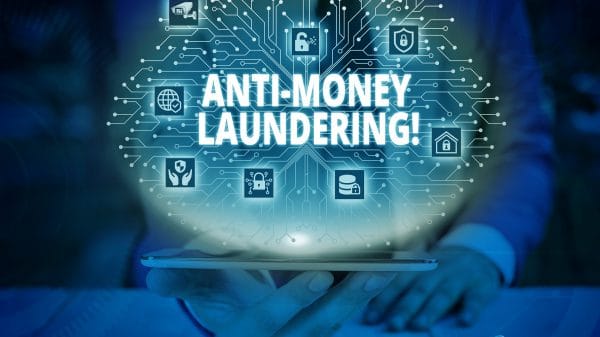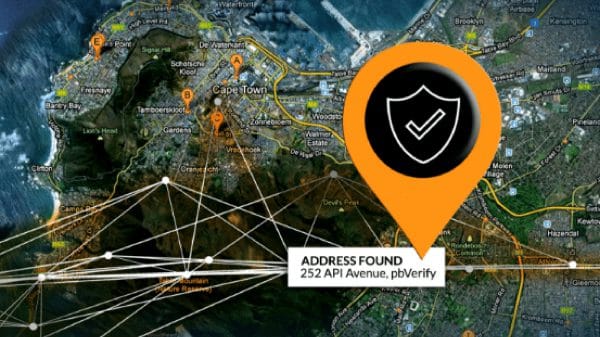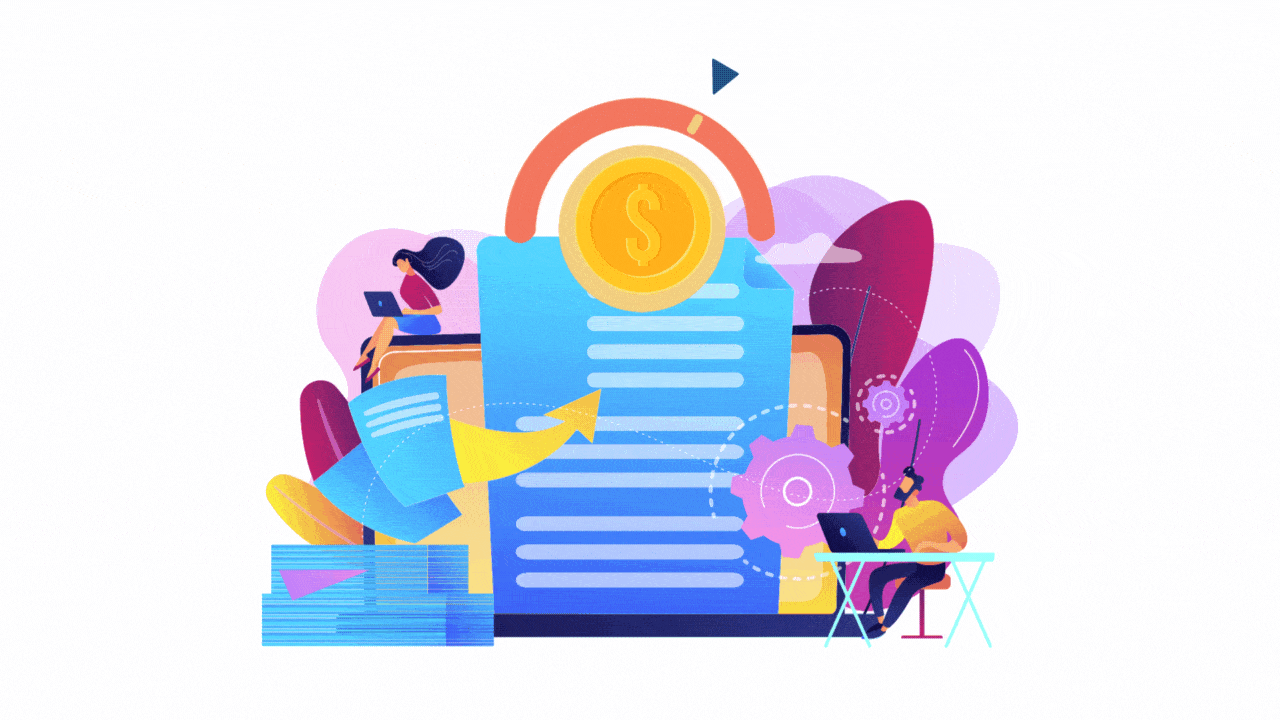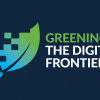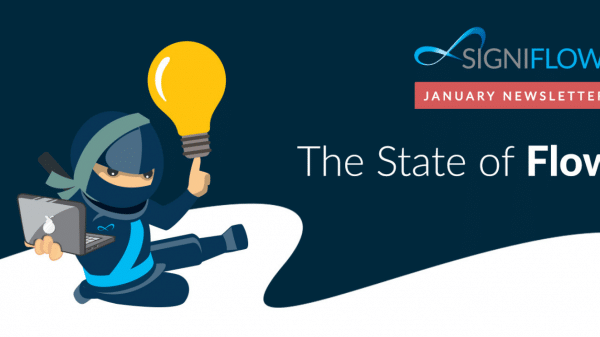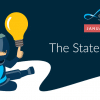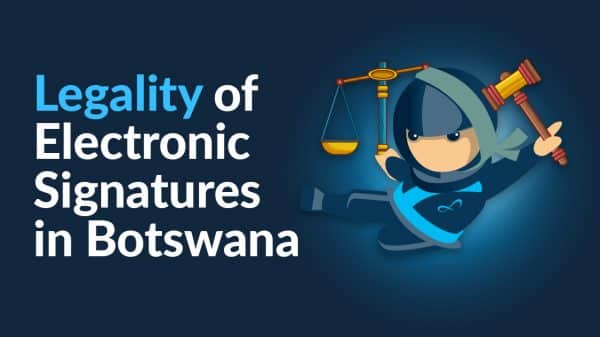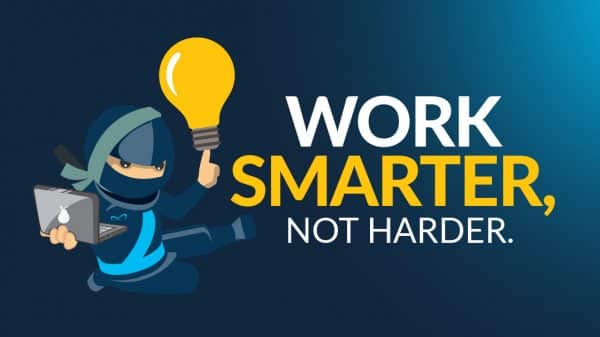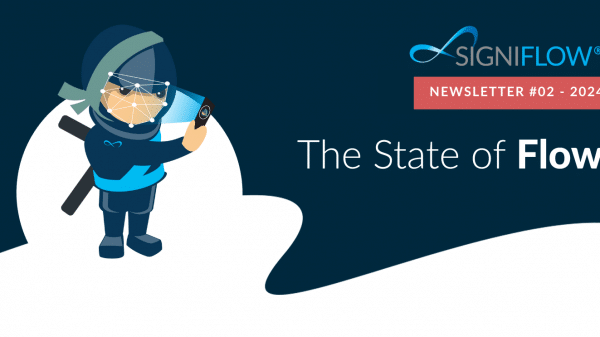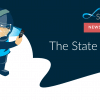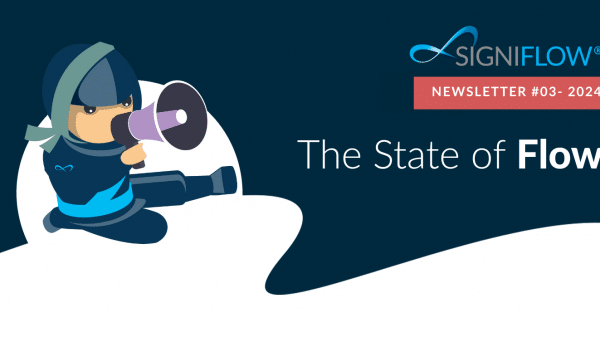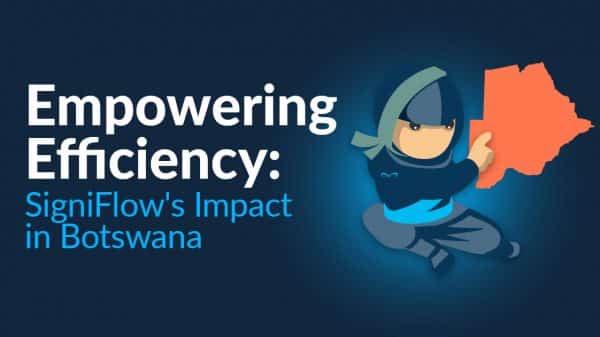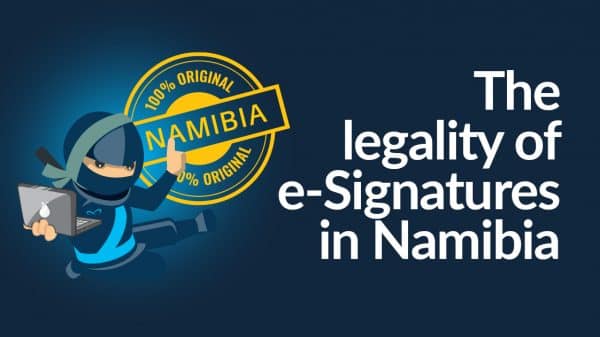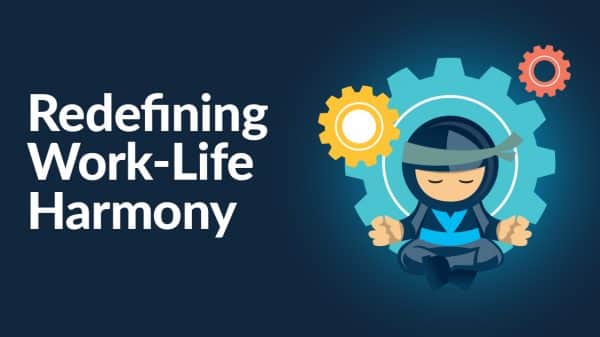At SigniFlow, our primary objective is to improve lives and the tools with which we aim to do this, are digital. The end goal, digital transformation, is something many businesses aspire to – but often don’t get right.
And it’s not easy, we know that. There are obstacles, ambiguities, and smokescreens along the way that can make the journey to digital transformation a challenging one. Our approach is to remove as many barriers as possible.
So, if you’re thinking about (or have already embarked on) your digital transformation journey, and you’d like to find out about the licensing pitfalls that could sink your project and blow your budget, this Q&A is for you.
In this Q&A, Leon an der Merwe, Group CIO and co-founder of SigniFlow software, weighs in on his perspective on alternative licensing methods, as described in the July 2022 Gartner Market Guide for Electronic Signatures.
Let’s dive in.
The Paperless Journey and Covid-19
Q: Signiflow itself is a paperless business, can you tell us what the journey to going paperless was like?
A: A Good question – It’s been an interesting jouney! Well, saying a business is paperless, is almost like saying your shoes are clean just because they’ve been polished. They may appear nice and shiny on top, but there will always be a part of them that treads on dusty floors.
Look, I think we are further down the road than most and maybe a bit less than some. I can say, at best, we do not make use of any printers or scanners, we send far fewer emails and require much less document storage (because documents are shared and not duplicated).
But we do use paper from time to time, mostly because of exterior factors, which one cannot control until everyone has fully adopted a digital strategy.
However, I do believe that we have reached a point of truth in digitisation, where all macro processes in our business run fully digitally.
And boiling it down, this can be attributed to two main things:
- The first and most important, is our people. Once the entire team is onboard, digitisation becomes easy.
- The second is IT systems. In most cases, this is not just one system, but multiple systems – each one doing its part and contributing to the overall strategy.
Q: How long have you been on the path to paperless and how has the recent Covid-19 pandemic upset – or accelerated – the process?
A: The journey to where we are now has taken us around 3-5 years and there was a period of acceleration during the pandemic. I think this was the case with most businesses. However, when we have conversations with businesses now – in retrospect – many are questioning whether their hasty decisions taken in 2020, were in fact the right ones.
Unfortunately, many companies have not progressed, for various reasons. Some seem to have still only what they implemented in 2020 and with some, sadly, as people returned to the office, so did their old habits.
A lack of leadership buy-in to digitisation can cause regression.
The Role of eSign Licensing Models
Q: As you said, many companies that rushed to deploy electronic signature tools in 2020, are now reassessing the license models they signed up for. To give a bit of background, please could you outline how digital and electronic signature tools are typically licensed?
A: Going back a few years, document management and workflow licensing was typically done on a server, or business-level, based on the number of users. The business would install the software and seldom were there any limitations on the number of workflows or documents they could use in the system. This effectively allowed the business to use the system without the fear of escalating costs.
If we look at most electronic signature software licenses today, which in essence fulfil a similar role, there is a vast difference. Because most eSign solutions are cloud-based offerings only, and because of the increase in demand, there has been a drastic change in models and, with this, an increase in pricing.
According to Gartner’s Market Guide for Electronic Signatures (2022 report not yet publicly available), the eSignature workflow model has become largely commoditised – which is the model that we see being pushed by most vendors.
This is referred to as “consumption-based billing”, whereby you pay for a certain number of signatures, or documents, or a collective of documents that some vendors refer to as an “envelope”.
These envelopes are transaction-based and, most often, given to the customer on a “use-or-lose” basis – meaning that a certain amount of transactions needs to be consumed in a given period, usually a month or a year.
This effectively means that every time a user releases a document for approval or signature, they pay anywhere between 2 and 4 US Dollars per envelope, even if the envelope only contained a single document.
It’s almost like paying the Post Office the maximum postage fee for a large envelope, when all you’re sending is a birthday card.
In effect, there is nothing wrong with consumption licensing, especially for smaller businesses that have low volumes (for instance if they only use it to send contracts to customers occasionally) but if you want to use the software more widely to digitise processes, such as internal applications or finance approvals, or to create transactional audit samples, then consumption-based models can become very expensive.
Q: What features usually come at an additional cost?
A: This differs from one application to another, but in general you will find that the features are all very similar, such as document workflow, approval, signature collection, and so on.
However, when you want the eSignature application to integrate via API with your business systems, or when you need plug it into your office 365 environment, or your CRM system, or you want single sign-on with your Microsoft ID, this is where the additional costs start mounting – because none of these are typically included in the standard license models.
We also see basic electronic signatures are typically included, but digital signatures with higher non-repudiation are being charged for additionally, in most cases unnecessarily so.
In certain cases, Certificate Authorities (or CAs) push their core business agenda, which is to sell digital signature certificates, without first assessing whether the customer really needs it and without offering built-in digital signatures, which are available in many digital signature applications.
Just doing a little homework upfront and partnering with a trusted eSign vendor to understand what you are buying, can go a long way.
Q: How do traditional eSign licensing models affect a business’s ability to budget?
A: Well, how long is a piece of string?
Very few businesses really know their usage volumes, so they end up overshooting their budgets, or they end up going back to paper, or semi-digital processes for the everyday tasks,
This is largely due to escalating costs and misaligned licensing.
We hear it so often from digitisation managers and project owners that had really great plans a few years ago to digitise the entire business, but they had to shrink their ideas to accommodate budget once they realised the actual costs of transactional billing.
And this is obviously not where you want to end up. It is also not necessary to end up here. If you scope the right tools for your business, this will not be your reality.
Gartner’s Market Guide for Electronic Signatures
Q: Gartner’s Market Guide for Electronic Signatures released in July 2022 – singles out SigniFlow as one of only a handful of global vendors who offer “alternative licensing models”. Can you elaborate?
A: The guide starts off by stating: “Many organisations that rushed to select and deploy electronic signature capabilities in 2020 are reassessing the value provided by the electronic signature solution – and whether it makes sense to pay for a premium product in a commoditised market.”
It then goes on to recognise SigniFlow and emSigner for offering alternative options, such as self-hosted models.
Now, “self-hosted” is a somewhat ambiguous term – and this is where things become interesting. Many may argue that self-hosted models are a little antiquated and do not fit in with modern cloud-migration strategies, but this is not the case.
“Self-hosted” doesn’t only refer to on-premise – it means that the customer or the customer’s cloud provider, such as Microsoft Azure or Amazon, or even the company’s website hosting provider or their Office 365 Microsoft Partner, provides the hosting platform as a service – and not the eSignature vendor.
This in turn allows for the eSignature vendor to open the license and extend enterprise license functionality, such as unlimited transactions, unlimited documents/envelopes/uploads and unlimited users on a single license and even flat-rate annual license fees.
Also bear in mind that eSignature vendors are internet companies and they make profit from hosting their software for customers, so it will always be more cost effective to get the hosting direct from a hosting provider, which then unlocks the enterprise licensing models that are more cost effective.
Q: Gartner mentions that there is an increase in low complexity/high volume use cases where the traditional pay per user or pay per transaction is difficult to justify. What are your thoughts?
A: Absolutely. Not every document has to be signed.
We are used to signing for almost everything because that was the way we always authenticated ourselves on paper.
When you start looking at digital identity, user authentication and digital audit logging of events, timestamping and so on, it becomes clear that low complexity, high volume processes can be digitised by “click approvals”, eliminating the need for the document to ever be signed.
Typical eSignature consumption-based models do not differentiate, they keep charging either way. This becomes very expensive and, in most cases, simply unaffordable for most companies.
Q: Gartner mentions that companies should not be scared to take a “multi-vendor approach” to digital signature solutions. Do you agree?
A: We do find some use-cases, where customers run various tools that are similar – each to address a specific use-case and because one tool may be better (or more economical) than another at fulfilling a need.
For instance, some platforms are more cost effective when it comes to contract signing, where others are more geared towards digitisation and automation. This could lead to the two co-existing in a single ecosystem.
This approach can save an organisation money, but you must take into consideration that this often comes at the expense of the user, who ends up having to log into different systems to complete different tasks.
Digitisation vs Automation
Q: What are the differences between Digitisation and Automation?
A: Processes exist in every business. Some are still paper-based and others we find are semi-digital, using fillable PDFs and emails to send documents to employees and to customers to fill, approve and/or print, sign, scan, and email.
Digitisation
Process digitisation is looking at each process in the business and fully digitising it with software that has the ability keep the process digital, end-to-end – no matter how many people internally, or external to the organisation are involved, and no matter how many departments in the business are part of the specific process.
Most processes involve multiple departments or role-players, which each deliver a set piece of the overall process.
For instance, a process may
- Start in sales (with, for insance, a quote), and then
- Move externally to the customer for approval, sign-off and uploading Purchase Orders, etc – and then
- Back internally to legal (for sales contracts, NDAs)
- Then to the procurement team (for stock orders), and
- Most often, it ends up in the finance department (for invoicing).
Effective Process Digitisation needs to cater for all of this. Everyone involved must have access and a holistic view of the end-to-end process.
Automation
Process Automation is where you take repetitive human tasks, and you automate the execution of the task using API-led integration.
For instance, when a vehicle is sold, there is typically the same set of contracts that must be executed, it’s only the customers that differ on each. So, automation of this task enables faster execution and much reduced manual effort.
A fully automated process usually ends up with very little-to-no human effort. Every step is automated and driven by business systems, decision engines, or a set of rules that determine the next step.
Q: How can businesses design their digitisation strategy?
A: You must first to look at each process in detail. It helps to start with processes that are paper-heavy, slow or still semi-digital.
Map the process step-by-step, starting with the desired result and working backwards, listing every role and task involved in the process.
Then, look at software that caters for the needs of these use-cases:
- It’s important that the tool is flexible in design, and can adapt to change personnel and future alignment and strategies, and
- It’s important that the cost of the tool does not hamper the digitisation strategy by breaking the budget as your volumes increase.
I suggest you work through the big ones first and then you’ll find many of the smaller ones tend to automatically fall in place as people get used to the system and start launching their own initiatives that make their lives easier.
It’s a good idea to completely eradicate the old process. People are creatures of habit and it’s far easier to fall back on the old process, than invest time in learning a new one.
Once they understand the new process, they often cannot believe that they ever did things the old way.
Q: If your goal is full automation, what needs to be taken into account?
A: Automation is a bit more complex.
So similarly, you need to map out the process first, and find an experienced partner that can assist you to model the process.
We – and most modern automation software companies – believe that, due to the complexities found in IT architecture, API-led integration is the only way forward.
Most processes are triggered by some form of manual data capture (such as web forms or onboarding applications) that in turn pushes the captured data to one or more business systems for manual execution.
Most modern business systems (ERP, ECMS, DMS, etc.) have built-in capabilities to kickstart automation, but they often lack the sophistication to present a smooth digital experience for both employees and customers.
Again, finding the right software partner with the right toolset that is flexible, scalable and within your budget, is key to a successful automation project.
Return on Investment for Digitisation
Q: Companies obviously need to justify the cost of purchasing software. What are some of the ROI metrics to look out for?
A: I often get asked this question and we can explore the trivial answers to this question around what ROI calculators offer – such as what savings you can expect per page, or per paper document, ink when not printing, or time saved looking for a filed hard copy versus finding the electronic copy – but these are usually not very accurate or realistic.
Fact is, the ROI factor is really far bigger than these easily quantifiable elements.
For a business to stay competitive in today’s changing marketplace, automation and digitisation have become more than just a “nice to have”. They have become vital to the success of modern business operations.
You know, we have become conditioned. Everyone has become accustomed to receiving electronic contracts, ordering goods online, and approving banking transactions on an app – and this has resulted in employees looking inward, questioning why their own internal processes are so slow and manual.
Then, when we get to the customer, they similarly expect a fast, digital experience when dealing with your company – or they will very quickly switch to competitors that offer a better experience.
Effectively designing business process digitisation and automation can help you achieve successful digital operations and it allows for highly engaging digital experiences that customers demand.
It is key that both your employees and your customers have a similar digital experience when working in -or with your company. This contributes hugely to a healthy, sustainable digital business.
Q: How do traditional, versus enterprise, licensing models affect your ROI calculations?
A: Traditional licensing models simply do not offer the savings to justify end-to-end digitisation.
Enterprise licensing models are mostly at a flat rate, meaning one price, designed to fit your specific business, its requirements, and your budget. This has
This has a huge impact on the overall, long-termcost of end-to-end digitisation and automation.
I can only urge Business owners, project owners, financial managers – no matter the size of the company – you need to do these calculations upfront. Do product comparisons and set budgets before making the final decision on which road to travel.
Ultimately, to ensure a successful, digital future for your business and its customers, examination and planning is the only way to go.

Leon has more than 20 years’ experience in the ICT industry. He is a true technocrat and strategist who has spent the past 10 years focusing on cryptographic technologies that drive business process automation. In other words, digitisation and automation run in his blood.

